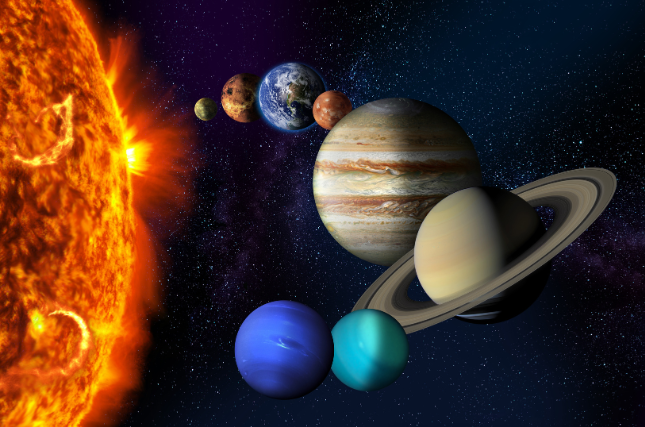
June 25, 2025 – A new study led by scientists from the Hebrew University of Jerusalem, NASA, the Florida Institute of Technology, the Barcelona Supercomputing Center, and the University of Oxford has uncovered a link between solar flares—sudden bursts of radiation from stars—and short-term weather patterns on distant Earth-like planets.
Published in The Astronomical Journal, the study presents the clearest evidence to date that space weather—particularly flares from a planet’s host star—can trigger measurable climate changes within just days of an event. These findings provide important insights about the habitability of exoplanets and may even help refine our understanding of short-term atmospheric shifts on Earth.
“This study highlights an underexplored but important solar-climate link,” said Dr. Assaf Hochman, from the Fredy and Nadine Herrmann Institute of Earth Sciences at Hebrew University. “While anthropogenic greenhouse gases primarily drive long-term climate change, we now see that short-term solar variability can also play a role in modulating regional climate behavior.”
The international team—including Dr. Assaf Hochman, Dr. Howard Chen, Dr. Paolo De Luca, and Dr. Thaddeus D. Komacek—used advanced 3D General Circulation Models to simulate how sudden stellar flares impact the climate on tidally-locked exo-Earths, such as TRAPPIST-1e, a planet that always shows the same face to its sun.
Their results reveal a chain reaction:
- Upper atmospheric cooling occurs quickly after a flare, driven by radiative emissions from molecules like NO and CO₂.
- Simultaneously, lower atmospheric warming happens due to increases in greenhouse-like gases such as H₂O and N₂O.
- Wind speeds in the middle atmosphere can intensify dramatically—surging to over 140 km/h on the dark, night side of the planet.
While the primary focus was on distant worlds, the study opens provocative possibilities for Earth’s climate systems too.
The observed patterns suggest that solar activity can temporarily alter a planet’s general atmospheric circulation. This isn’t about long-term climate shifts, but rather short-lived regional anomalies—the kind that could be especially noticeable in already volatile weather zones.
The research emphasizes that while solar flares are not a major driver of Earth’s long-term climate compared to human activity, their effects are real, detectable, and worth factoring into future atmospheric models. This is particularly true when considering regions sensitive to abrupt changes in temperature and wind.
The study also highlights that stars don’t just warm their planets—they can influence the weather too. Understanding these interactions is crucial to assessing which exoplanets might truly be capable of supporting life.
This interdisciplinary effort brought together experts in astroclimate modeling, atmospheric chemistry, and planetary science, with support from institutions across four countries and several NASA research centers. Their findings not only deepen our understanding of distant exoplanets but could also help us refine how we predict and prepare for solar influences on Earth.
The research paper titled “Effects of transient stellar emissions on planetary climates of tidally locked exo-earths” is now available in The Astronomical Journal and can be accessed here.
Researchers:
Howard Chen1,2, Paolo De Luca3, Assaf Hochman4, and Thaddeus D. Komacek5, 6, 7
Institutions:
- Department of Aerospace, Physics, and Space Sciences, Florida Institute of Technology
- Sellers Exoplanet Environments Collaboration (SEEC), NASA Goddard Space Flight Center
- Barcelona Supercomputing Center (BSC)
- Fredy and Nadine Herrmann Institute of Earth Sciences, The Hebrew University of Jerusalem
- Department of Physics (Atmospheric, Oceanic and Planetary Physics), University of Oxford
- Blue Marble Space Institute of Science, Seattle
- Department of Astronomy, University of Maryland




